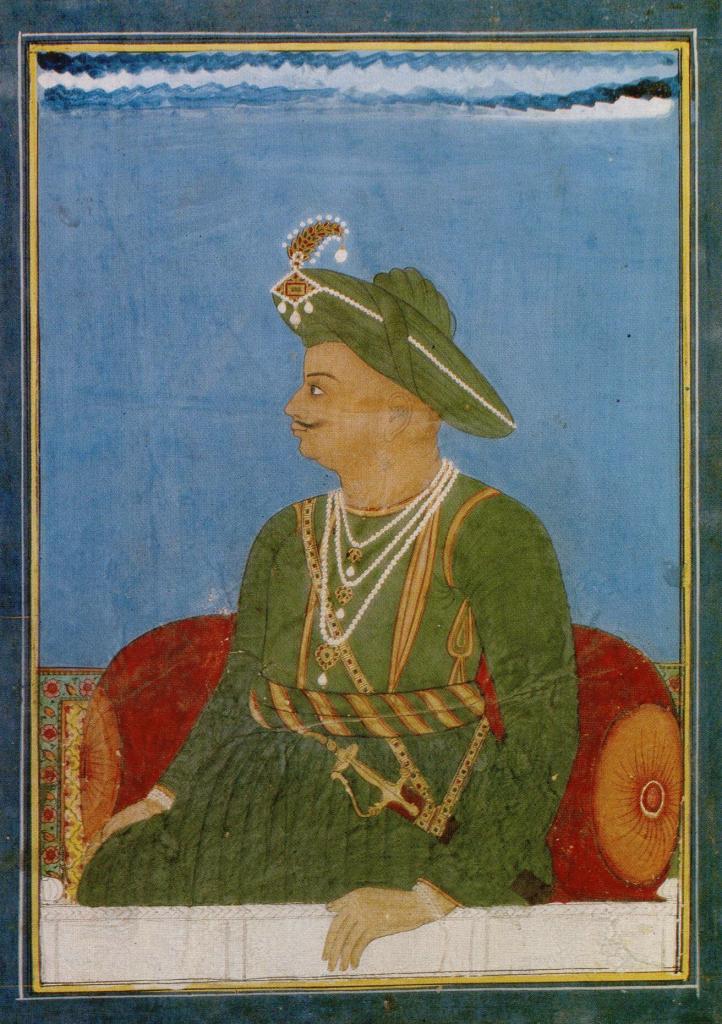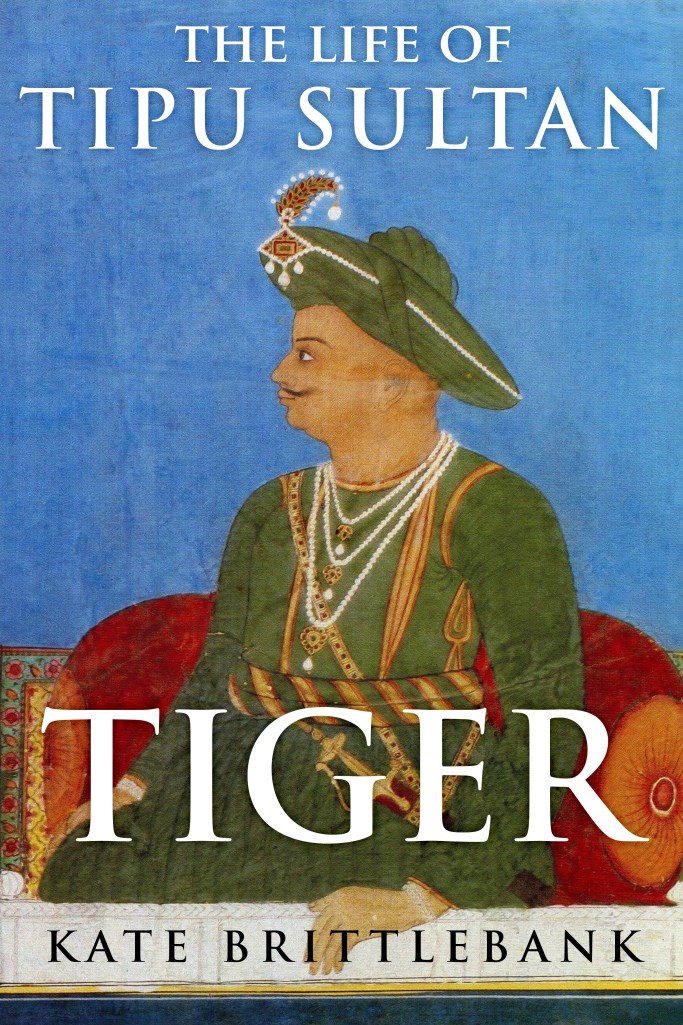Mysuru, KARNATAKA :
An extract from Kate Brittlebank’s Tiger: The Life of Tipu Sultan.

The Karnataka government’s decision to celebrate the birth anniversary of Tipu Sultan has once against created a controversy, with the BJP and the RSS as well as local groups in Kodagu district opposing the move. A rally against the proposed celebration is planned in Bangalore on Tuesday. Last year, the government’s decision led to large-scale violence; this year, a case was filed against the move, but the court’s declined to interfere, calling it a policy decision. At the same time, the judges asked what the rationale was to hold such a celebration.
Was Tipu Sultan (1750-1799) a hero or a villain and was he, as is claimed, against Hindus? Some scholars have contested these views. In this excerpt from her book Tiger: The Life of Tipu Sultan, historian Kate Brittlebank gives a more nuanced and holistic view of the man and the monarch, who, she says, was a product of his times.

Tiger: The Life of Tipu Sultan
Juggernaut, 2016
It was also important, if Tipu were to retain power, that he tap into the south’s shared sacred landscape, and it is in this light that we should read his patronage of religious institutions, which was widespread. For centuries, kings had associated themselves with the sacred sites of the region, the most significant being the river Kaveri, the Ganges of the south. Rising in the hills of Kodagu, the river wends its way across the Mysore plateau and down onto the plains of Tamil Nadu. Its entire length is dotted with religious landmarks, small and large. For south Indian kings the Kaveri was not only the source of life-giving water but also of divine power. Along the river are three islands, formed where the water divides: from east to west, they are Srirangam, Sivasamudram and Srirangapattana. These are the places where Vishnu sleeps upon the great serpent Sesha, when he is known as Sri Ranganatha, and on the islands are temples dedicated to the deity. The most magnificent is at Srirangam but all were recipients of past royal patronage; in 1610, Raja Wodeyar transferred his capital to Srirangapattana from Mysore after seizing the island from the Vijayanagara viceroy, Tirumala.
Given that the island of Srirangapattana was such a significant repository of divine power, Tipu would have been foolhardy to transfer his capital elsewhere. He continued the Wodeyars’ patronage of the Sri Ranganatha temple, alongside which stood his main palace, and erected a Friday mosque. Haidar’s tomb stood at the other end of the island, near the sangam, next to which Tipu built another, smaller mosque. Put simply, lordly benefaction, one of the defining characteristics of Indian kingship, was pragmatic in purpose. Along with their magnificent displays of power and wealth, kings were expected to be conspicuously pious. They made land grants, donated precious artefacts and mediated in religious disputes. In return, they could expect support for the legitimacy of their rule and prayers for the security and prosperity of the realm. Tipu behaved no differently: his generosity to temples, Sufi dargahs and mosques, as well as the great Math at Sringeri, are well documented, primarily through inscriptions and institutional records.
An idea of the number of Tipu’s religious endowments across his realm can be gained by looking at in‘am registers held in the Kozhikode Archives in Kerala. The records show that Tipu authorised sixty-seven grants of rent-free land, primarily to temples and mosques, solely for the taluks of Calicut, Ernad, Bettathnad and Chowghat. If we extrapolate that figure across the entire realm, it is clear that his patronage of such institutions was extensive. We know of several temples that hold objects donated by Tipu – the Sri Ranganatha temple at the capital received silver vessels, the Nanjundeshwara temple at Nanjangud has a jadeite linga said to have been installed on Tipu’s orders, and inscriptions record that he gave elephants and silver vessels to the Narayanaswami temple in Melukote.
The Sringeri Math, with which Tipu maintained a close relationship, received gifts of valuable cloths and shawls, a silver palanquin and a pair of silver fly whisks. The importance of the Math to south Indian and Deccani rulers – both Hindu and Muslim – since its foundation in the eighth century, is demonstrated by the fact that it holds more than 200 copperplate grants and sanads, the earliest dating from the Ganga dynasty (c. 250–1000 ce). Tipu referred to the Math’s Swami as the Jagadguru and, after the Marathas had raided the Math in 1792, he wrote in a letter that the culprits would ‘suffer the consequences of their misdeeds at no distant date in the Kali age’, concluding that ‘treachery to gurus will undoubtedly result in the destruction of the line of descent’.
The political nature of religious patronage was also the rationale behind acts of destruction. All across India, whenever a king conquered another, he signalled his victory by either seizing or destroying the religious sites with close ties to his victim – and it made no difference if conqueror and conquered were co-religionists. Just as Shaivite and Vaishnava dynasties in south India patronised mosques, dargahs and churches, they did not hesitate to capture the temples of their enemies and seize or destroy the images. The Cholas seized temple images from the Calukyas; and Vijayanagara’s Krishnadevaraya, to celebrate his defeat of the Gajapati king, removed an image of Balakrishna from Udayagiri to the capital. We can see this process in operation with Tipu’s demolition of the Varahaswami temple at Srirangapattana; after his death, the Wodeyars, in a statement of their own ‘victory’, relocated the ruined temple’s image to Mysore town, which once again was serving as their capital. If Tipu’s actions had been driven by religious rather than political motivation, he would not have allowed the Sri Ranganatha temple to continue to flourish within sight of his palace. It was the Wodeyars’ direct association with Vishnu’s boar incarnation that led to Tipu’s demolition of the Varaha temple. Nor were Christians exempt from such treatment – the Venkataramana temple in Nagar (formerly Haidarnagar/Bednur) possesses a bell cast in Amsterdam in 1713. The presence of this oddity in a Hindu place of worship is due to Tipu’s removal of it from a church in Malabar.
Similarly, Tipu did not discriminate against particular religious groups on the basis of their faith – indeed, his diwan or chief minister, Purnaiya, was a Hindu. As we have already seen, Tipu suspected the Kanara Christians of treachery and being in league with the British; the Nairs and the Kodavas, too, were punished for intriguing against him. And if there should be any doubt about what lay behind the treatment of such groups, the expulsion of the Mahdevis from Mysore in 1794 confirms the political character of such acts. This tight-knit Muslim community of several thousand mainly served in Tipu’s army as horse soldiers, under the command of their own officers. That Tipu was in no way prejudiced against this sect is demonstrated by the fact that one of his four vakils to Istanbul, Ja‘far Khan, was a Mahdevi; even so, he too was expelled in 1794. The stated reason for the community’s expulsion was their refusal to obey Tipu’s command to keep certain celebrations low-key – they were prone to noisy bouts of praying – as the festivities that year coincided with the return of the hostage princes from Madras. The more likely reason, however, was that Tipu suspected the Mahdevis of treason, with their festival disobedience merely the trigger for the order that they leave the kingdom. Interestingly, during the Fourth Anglo-Mysore War, many of them served under Arthur Wellesley as irregular horse, although it is not clear if this was a consequence of Tipu’s treatment of them, or if Tipu had been correct in his original assumption of their disloyalty.
Excerpted with the permission of Juggernaut Books from Tiger: The Life of Tipu Sultan by Kate Brittlebank, available in bookstores and on the Juggernaut app
___________________________________________________________________________
source: http://www.thewire.in / The Wire / Home> Books / by Kate Brittlebank / November 07th, 2016








